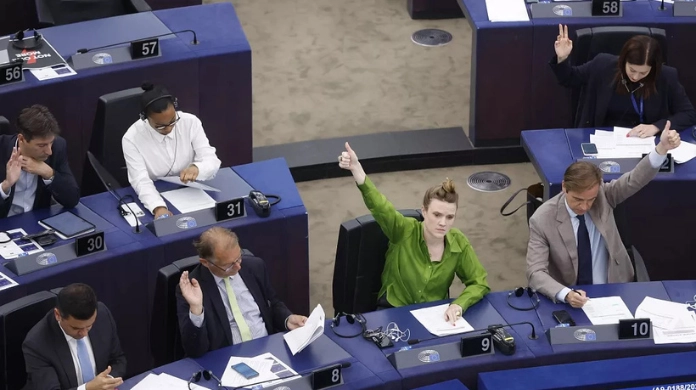The European Union’s recent release of new guidelines and regulatory proposals governing the use of artificial intelligence (AI) has generated a firestorm of controversy, igniting sharp criticism from industry leaders, startups, civil rights organizations, and some lawmakers. The guidance, which aims to provide a comprehensive framework for the safe and ethical deployment of AI technologies, has faced accusations of being either too burdensome or too weak, reflecting the complex and contentious landscape of AI regulation in Europe.
Context and Overview of the EU AI Guidelines
In recent months, the European Commission and Parliament have accelerated efforts to institute formal rules around AI, culminating in the proposed AI Act and supplementary codes of practice. These regulations cover general-purpose AI models—systems that can be applied flexibly across tasks—making the rules some of the first of their kind globally. The EU’s approach seeks to balance innovation with public safety, addressing risks such as algorithmic bias, privacy violations, misinformation, and autonomous decision-making.
However, balancing these goals has proven fraught. The guidelines call for rigorous transparency, risk assessments, and compliance mechanisms but also include voluntary codes alongside legally binding standards. This dual-track approach aims to give companies some flexibility but has drawn mixed reactions.
Industry Pushback: Calls for Delay and Flexibility
Tech giants such as Meta and Google, alongside Europe-based startups and industry groups, have been vocal in their criticism. Leading voices warn that the regulations could stifle innovation, impose excessive costs, and derail Europe’s burgeoning AI ecosystem if enforced too quickly or rigidly.
According to reports, over a hundred tech CEOs and startup founders jointly signed letters urging European lawmakers to delay the enforcement timeline, expressing concern that the current schedule does not allow sufficient time to adapt. One prominent industry representative stated,
“The proposed AI regulations, while well-intentioned, risk putting European companies at a competitive disadvantage without clear global alignment.”
Such messages echo fears that AI-focused investment and talent may flow out of the EU, undermining its technological future.
Startups in particular emphasize the potential chilling effect of a one-size-fits-all regulatory regime. They argue that small and medium enterprises lack the resources to swiftly comply with the extensive documentation, algorithmic impact assessments, and audit requirements that larger corporations might better absorb.
Civil Society and Parliamentary Concerns Over Industry Influence
While industry representatives warn of regulatory overreach, civil rights groups and some Members of the European Parliament (MEPs) argue that the current guidelines are actually too lenient, especially because of the voluntary nature of some compliance mechanisms. These groups maintain that without firm enforcement, fundamental rights such as privacy, freedom of expression, and non-discrimination could be jeopardized.
In an interview, an MEP working on digital rights issues remarked,
“We are deeply concerned by the massive lobbying pressure from big tech, which threatens to water down the safeguards we fought hard to include.”
This sentiment is echoed by human rights NGOs, which stress that the AI Act must not become a mere box-ticking exercise but a meaningful instrument to protect citizens.
Some critics highlight loopholes in the drafting process, noting that voluntary codes accompanying the guidelines could undermine the rigorous protections intended by law. Critics warn that without mandatory rules for high-risk AI systems, including general-purpose models, vulnerable communities may bear disproportionate harms.
Lobbying Dynamics Within Brussels: Power, Pressure, and Negotiation
The debate over AI regulation has unfolded within a fiercely contested lobbying environment. Tech companies, industry associations, start-up coalitions, and advocacy groups have all mobilized to influence the evolving policy landscape. According to insiders, the lobbying efforts include direct outreach to EU Commissioners, the European Parliament’s digital affairs committees, and member state representatives.
Recent investigations reveal that between January and May 2025 alone, some of the biggest tech firms held dozens of high-level meetings with EU officials to shape the text of the AI Act and its implementation rules. These encounters reflect the acute strategic importance placed on AI by all sides.
A lobbyist for a leading European tech trade association explained,
“We engage constructively with legislators to ensure the final law supports innovation and competitiveness. However, overly rigid provisions risk strangling growth and reducing Europe’s voice in global AI standards.”
Conversely, representatives of civil society groups accuse industry lobbyists of doggedly pursuing watered-down rules,
“with a relentless focus on weakening safeguards that protect fundamental rights.”
The Challenge of Regulating General-Purpose AI
One of the most contentious divides revolves around general-purpose AI systems, such as large language models and other foundational tools capable of wide-ranging applications. Unlike purpose-built AI, these models raise novel regulatory questions about scope, transparency, and risk management.
The EU has proposed including these systems under stricter regulatory frameworks, requiring heightened transparency obligations and human oversight. However, some industry stakeholders argue that the broad categorization is overly vague and would impose undue burdens on developers who may not always predict or control downstream use of these models.
In response, EU officials have defended the move as necessary to
“preemptively address potential harms, including misinformation, data misuse, and biased outcomes.”
One Commission spokesperson noted,
“Our regulations are designed to foster trustworthy AI while ensuring innovation is not suppressed. This is a delicate but essential balance.”
The Ambiguous Role of Voluntary Codes of Practice
A unique feature of the EU’s approach is the introduction of voluntary codes for some AI technologies, intended to complement more binding regulations. This mechanism has drawn praise and criticism alike.
Industry supporters see voluntary codes as a pragmatic option allowing innovation to thrive at manageable regulatory cost. Conversely, many civil society advocates reject voluntary standards as insufficient, warning that without enforceable rules, companies may prioritize business interests over ethics and safety.
An AI ethics expert commented,
“Voluntary codes can serve as useful best practice benchmarks, but they must not replace binding regulations where rights and safety are at stake.”
This tension between flexibility and accountability continues to dominate debates.
Potential Impacts on the EU Tech Sector and Global AI Governance
The eventual shape and enforcement of the AI Act will have profound consequences for the European technology ecosystem. Should the rules prove too strict or ambiguous, investment flows may shift to regions with more permissive regimes, such as the United States or China.
At the same time, the EU’s leadership in AI governance can position it as a global standard-setter, shaping ethical norms and legal frameworks worldwide. The ongoing tug-of-war between different interests is therefore not only about local regulation but also about geopolitical influence and the future of AI development.
In this context, observers note with interest how the EU’s decisions affect transatlantic relations and emerging international coalitions focused on AI safety and rights protection.
The AI Act is currently undergoing intense negotiations between the European Commission, Parliament, and Council of Ministers. Stakeholders expect further revisions to address concerns raised by all parties.
An EU official involved in the process said,
“We are committed to delivering a balanced framework that protects citizens while nurturing innovation. The dialogue with industry and civil society is complex but critical.”
Meanwhile, industry players continue to lobby for extended compliance timelines and clarified definitions, while civil rights groups advocate for stronger enforcement provisions.
The final version of the AI Act could be adopted as early as late 2025 or 2026, with phased implementation following.
In summary, the EU’s AI guidelines have sparked massive criticism, reflecting deep divisions among policymakers, industry, and civil society about how to regulate a transformative technology responsibly and effectively. The fierce lobbying efforts demonstrate the high stakes involved—not just for technological development and economic competitiveness—but for fundamental rights protections and the future societal role of AI.
As this landmark regulatory experiment advances, its success will depend heavily on how well the competing interests can be reconciled to craft laws that are rigorous yet adaptable, protective yet enabling—a challenge few regions have dared to undertake with such ambition.







